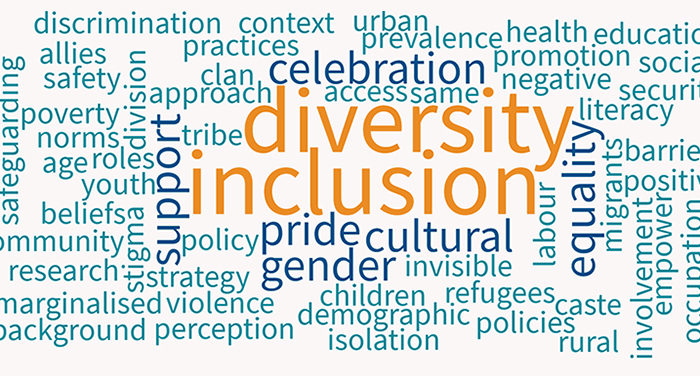Inclusiveness and diversity

Inclusiveness in the workspace
Inclusiveness in the workplace is an area that many organizations struggle with. In some cases, companies manage to create an inclusive atmosphere and attract diverse staff, however this is not always easy.
The concept of inclusiveness is attractive but the meaning is often unclear: What exactly is inclusiveness?Inclusiveness is about creating space for diversity. Put simply, people in an organization should have the space to be themselves. The process of inclusiveness starts internally and only then does it becomes visible externally. Once visible, an diverse organisation will also help attract others.
Bernice Feller Thijm, with her company JustB, advises and guides organizations that want to become more inclusive and diverse. She says: “An inclusive culture for having diversity in the workplace is indispensable. However, there is no blueprint for the right way to work because every company is different and works within a different context. So always make sure to translate the theory of inclusiveness to a specific company.”
Inclusiveness and diversity refers to different groups in society. Some that might come to mind are gender, people with a disability or ethnicity. Naturally, each of these groups will require a different approach.
A good example of inclusiveness outside the humanitarian sector
Netflix is an organization that is well ahead of the curve when it comes to cultivating inclusion. This company believes it is important for the organization to reflect the entire world. This starts with hiring a diverse group of writers. Watch a short video here about inclusivity at Netflix and tips the organization gives for making it happen the right way.
Sowing the seeds: inclusion takes root at Netflix.
Why work on inclusion?
The answer to this question will be different for every company. The starting question to tackle the issue of inclusion within an organization is: Who do I want to be inclusive for? And perhaps also relevant: For whom not?
In all cases, the reality stands: inclusion and diversity promote an open mind. A diverse group of people will bring different ideas, solutions and innovations, but also different perspectives on the world around us.
Inclusiveness isn’t always easy. Making room for diversity and cultivating inclusiveness doesn’t come naturally. Organizations often have deeply ingrained habits and ways of working that are hard to break. Yet change is possible. Bernice advocates working with an external party to highlight what might need to change: “To discover what your blind spots are, it can be really nice to work with an external person who holds all your habits up to the light.”
Do you want to read more about inclusiveness and diversity? Click here.
The D&I Road Trips are organized by KUNO in collaboration with Bernice Feller Thijm (JustB), Mariken Gaanderse (OnPurpose) and Otto Kamsteeg (OnPurpose).
